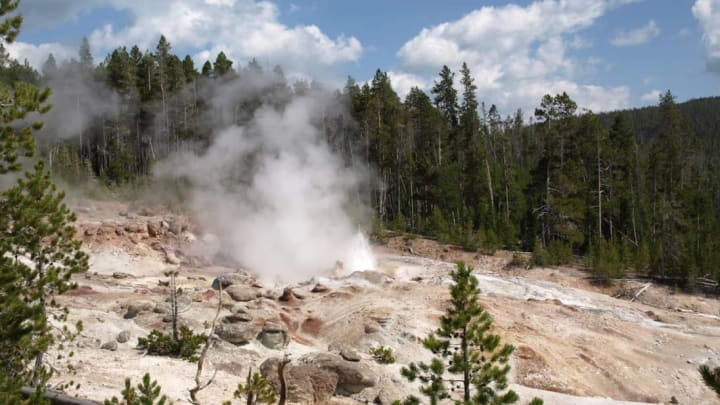An eruption from Steamboat Geyser in Yellowstone National Park is normally a rare sight, but guests were treated to the geothermic show seven times in the past three months, according to the USGS. The last time the geyser spouted at least three times in a year was 2003, and scientists are still struggling to find out the cause behind the sudden spike in activity.
Old Faithful has garnered fame in Yellowstone and beyond for its regular eruptions that blow every one to two hours, but Steamboat is less reliable. Geysers occur when magma heats up the water and gases trapped in pockets under the ground. If enough pressure builds up, the steam and boiling water will escape through cracks in the earth and shoot past the surface. The reservoir beneath Old Faithful is fairly simple, as geological maps have shown us, and that explains the frequent eruptions. But the structure beneath Steamboat is likely more complicated, leading to eruptions that result from a combination of hard-to-predict factors.
Steamboat's last eruption before this recent marathon of spurts was recorded in September 2014. The geyser's water columns have been know to reach up to 300 feet, making it the tallest active geyser in the world.
Geologists have come up with a few explanations for the phenomena, one being that it was caused by thermal activity in the park's Norris Geyser Basin. Another possibility is that the geyser is having these smaller eruptions closer together in place of one large one. While they haven't come to a consensus on the cause, experts do agree that the frequency of the eruptions is unlike anything they've seen at this geyser before.
While the geyser activity remains a mystery, it shouldn't be taken as an indication that a catastrophic volcanic event is coming to Yellowstone anytime soon. The last volcanic eruption on the park's land took place 70,000 years ago.
[h/t NPR]
